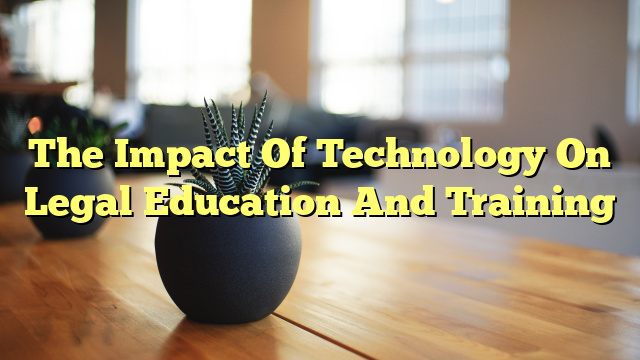Table of Contents
- How Does Technology Affect Education and Training?
- How Technology is Changing the Legal Profession?
- How Will Technology Change in the Future For Lawyers?
- What Are the Impacts of Technology on Higher Education?
How Does Technology Affect Education and Training?
Technology has had a profound effect on the way legal education and training is delivered and received. Technology has made it easier for students and instructors to access materials, interact with one another, and track progress. For example, many law schools now provide course lectures and materials online, allowing students to access them from anywhere, at any time. Online course management systems also allow instructors to provide students with feedback and keep track of their progress.
Technology has also made it easier for law students to stay in touch with their peers and collaborate on projects. Many law schools have adopted online discussion boards or online learning communities, making it easy for students to stay in touch with one another and collaborate on projects and assignments.
Technology has also enabled law schools to provide students with access to a greater variety of courses and materials. Many law schools now offer courses and materials that are not available in the traditional classroom. For example, some law schools provide students with access to online legal research databases and other legal resources. These resources can be a valuable addition to a law student’s educational experience.
Finally, technology has made it easier for law schools to offer distance learning classes, allowing students to take courses from anywhere in the world. This can be a great benefit for students who are unable to attend classes in person.
How Technology is Changing the Legal Profession?
Technology is changing the way lawyers practice law. Technology has made it easier for lawyers to access legal information, communicate with clients, and manage their cases. For example, lawyers can now access legal research databases, communicate with clients via email and instant messaging, and manage their cases using online case management software.
Technology has also made it easier for lawyers to collaborate with other lawyers. For example, many law firms use online document sharing systems and online collaboration tools to work together on cases. This makes it easier for lawyers to share documents and collaborate on cases without having to be in the same physical location.
Finally, technology has made it easier for lawyers to provide legal services to clients. Many lawyers now use online legal services such as LegalZoom, Rocket Lawyer, and Avvo to provide legal advice and services to clients. This makes it easier for clients to access legal services and for lawyers to provide legal services to a larger number of clients.
How Will Technology Change in the Future For Lawyers?
Technology will continue to change the way lawyers practice law in the future. It is likely that lawyers will continue to use online document sharing systems and online collaboration tools to work together on cases. It is also likely that lawyers will continue to use online legal services such as LegalZoom and Avvo to provide legal advice and services to clients.
In addition, it is likely that artificial intelligence (AI) will become increasingly used in the legal profession. AI can be used to automate certain tasks, such as document review, legal research, and contract analysis. This could help lawyers to save time and money, as well as improve the accuracy of their legal work.
What Are the Impacts of Technology on Higher Education?
Technology has had a major impact on higher education. Technology has made it easier for students to access course materials, interact with instructors and peers, and track their progress. It has also made it easier for universities to offer distance learning courses and provide students with access to a greater variety of courses and materials.
In addition, technology has helped universities to create more engaging and interactive learning environments. For example, many universities now use virtual reality and augmented reality technology to create immersive learning experiences for students. This can help to increase engagement and make the learning experience more enjoyable for students.
Finally, technology has made it easier for universities to assess student performance. For example, many universities now use online testing and evaluation systems to track student progress and provide feedback to instructors. This can help to improve the accuracy of assessment and make the assessment process


Technology is revolutionizing legal education and training. Consider utilizing virtual courtrooms to increase access.